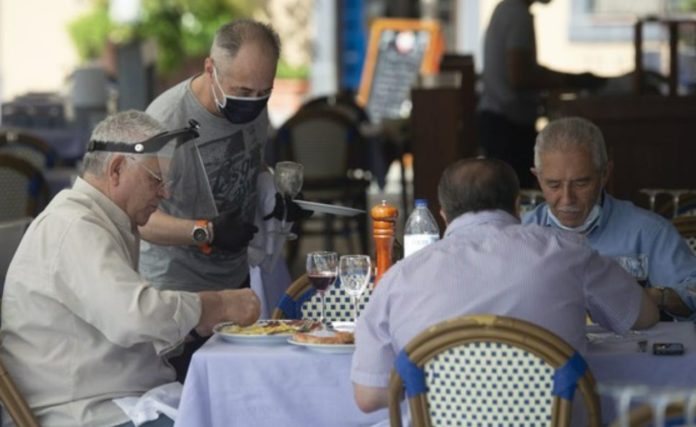The findings emphasize the need of social distancing and the wearing of masks as the most efficient ways of infection prevention. While ventilation is recommended, it is unlikely to have much of an effect.
After 20 minutes, SARS-CoV-2 particles lose their infectivity. Within 20 minutes of being spread through the air, the coronavirus loses 90 percent of its ability to infect us, according to a study on the medRxiv website. Most of the loss happens in the first five minutes, the study says.
The findings highlight the importance of short-range Covid transmission, with physical separation and mask use likely to be the most effective methods of infection prevention. While ventilation is recommended, it is unlikely to have much of an effect.
“People have been focused on poorly ventilated spaces and thinking about airborne transmission over metres or across a room. I’m not saying that doesn’t happen, but I think still the greatest risk of exposure is when you’re close to someone,” says Prof Jonathan Reid, the study’s lead author.
“When you move further away, not only is the aerosol diluted down, there’s also less infectious virus because the virus has lost infectivity [as a result of time].”
So far, studies involving spraying viruses into sealed containers called Goldberg drums, which rotate to keep the droplets airborne, have been used to make assumptions about how long the virus survives in airborne droplets.
A group of researchers discovered that infectious virus could still be detected three hours later using this method.
Such trials, on the other hand, do not adequately replicate what happens when humans cough or breathe.
Instead, University of Bristol researchers developed a device that allowed them to produce any number of tiny virus-containing particles and gently float them between two electric rings for anywhere from five seconds to 20 minutes while tightly controlling the temperature, humidity, and UV light intensity of their surroundings.
“This is the first time anyone has been able to actually simulate what happens to the aerosol during the exhalation process,” Reid adds.
According to the study, once virus particles leave the relatively moist and carbon dioxide-rich environment of the lungs, they swiftly lose water and dry up, whereas the transition to lower carbon dioxide levels is associated with a rapid increase in pH. Both of these variables make it difficult for the virus to infect human cells, but the rate at which the particles dry out depends on the relative humidity of the air.
When this was less than 50 percent – as it is in many offices – the virus lost roughly half of its infectivity in five seconds, after which the fall was slower and more constant, with a further 19 percent loss over the next five minutes. The reduction in infectivity was more slow at 90 percent humidity – about akin to a steam or shower room – with 52 percent of particles remaining infectious after five minutes, dropping to about 10 percent after 20 minutes, and then there was no difference between the two environments.
The air temperature, on the other hand, had no effect on viral infectivity, defying popular belief that viral transmission is reduced at high temperatures.
“It means that if I am meeting friends for lunch in a bar t“It means that if I’m meeting friends for lunch in a pub today, the primary [risk] is likely to be me transmitting it to my friends, or my friends transmitting it to me, rather than it being transmitted from someone on the other side of the room,” added Reid.
He went on to say that this emphasizes the need of wearing a mask in situations where people can’t physically distance themselves.
Source: medrxiv
Image Credit: Getty
You were reading: SARS-COV-2’s airborne infectivity drops by 90% in the first 20 minutes
